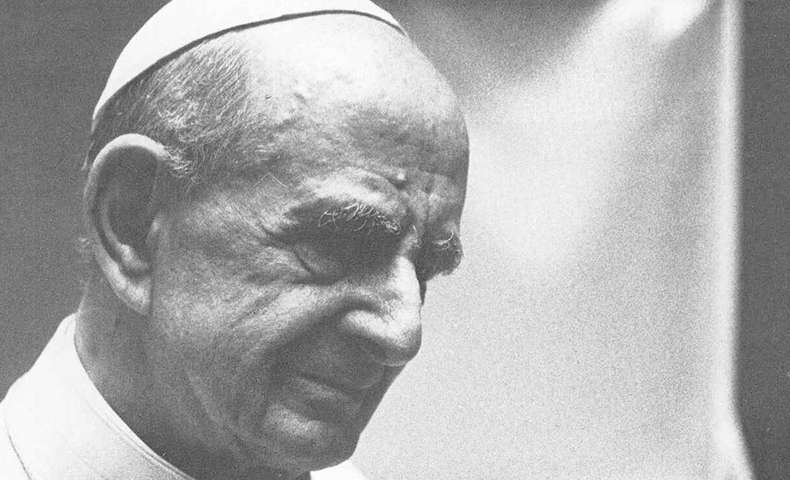Saint Paul VI, Saint of the day for September 26th

(26 September 1897 - 6 August 1978)
History of Saint Paul VI
Born near Brescia in northern Italy, Giovanni Battista Montini was the second of three children. His father, Giorgio, was a lawyer, editor and eventually a member of the Italian Chamber of Deputies. His mother, Giuditta, was very involved in Catholic Action.
After his priestly ordination in 1920, Giovanni graduated in literature, philosophy and canon law in Rome before joining the Vatican Secretariat of State in 1924, where he worked for 30 years. He was also chaplain of the Federation of Italian Catholic University Students, where he met and became a close friend of Aldo Moro, who eventually became prime minister. Moro was kidnapped by the Red Brigades in March 1978 and murdered two months later. A devastated Pope Paul VI presided over his funeral.
In 1954, Fr. Montini was appointed archbishop of Milan, where he tried to win back the disaffected workers of the Catholic Church. He called himself the "workers' archbishop" and regularly visited factories while overseeing the rebuilding of a local church badly devastated by World War II.
In 1958 Montini was the first of the 23 cardinals appointed by Pope John XXIII, two months after the latter's election as pope. Cardinal Montini contributed to the preparation of Vatican II and enthusiastically participated in its first sessions. When he was elected pope in June 1963, he immediately decided to continue that Council, which had three more sessions before its conclusion on December 8, 1965. The day before the conclusion of Vatican II, Paul VI and Patriarch Athenagoras lifted the excommunications of their predecessors done in 1054. The pope worked very hard to ensure that the bishops approved the 16 documents of the council by an overwhelming majority.
Paul VI stunned the world by visiting the Holy Land in January 1964 and personally meeting Athenagoras, the Ecumenical Patriarch of Constantinople. The pope made eight other international trips, including one in 1965, to visit New York City and speak for peace before the United Nations General Assembly. He also visited India, Colombia, Uganda and seven Asian countries on a 10-day tour in 1970.
Also in 1965 he instituted the World Synod of Bishops and the following year he decreed that the bishops should offer their resignations upon reaching the age of 75. In 1970 he decided that cardinals over 80 would no longer vote in papal conclaves or head of the major of the Holy See. offices. He had greatly increased the number of cardinals, giving many countries their first cardinal. Finally establishing diplomatic relations between the Holy See and 40 countries, he also established a permanent observer mission to the United Nations in 1964. Paul VI wrote seven encyclicals; his latest in 1968 on human life - Humanae Vitae - prohibited artificial birth control.
Pope Paul VI died in Castel Gandolfo on August 6, 1978, and was buried in St. Peter's Basilica. He was beatified on October 19, 2014 and canonized on October 14, 2018.
Reflection
Pope Saint Paul's greatest achievement was the completion and implementation of Vatican II. His decisions on the liturgy were the first to be noticed by most Catholics, but his other documents - especially those on ecumenism, interreligious relations, divine revelation, religious freedom, the self-understanding of the Church and the work of the Church with the entire human family - have become the road map of the Catholic Church since 1965.